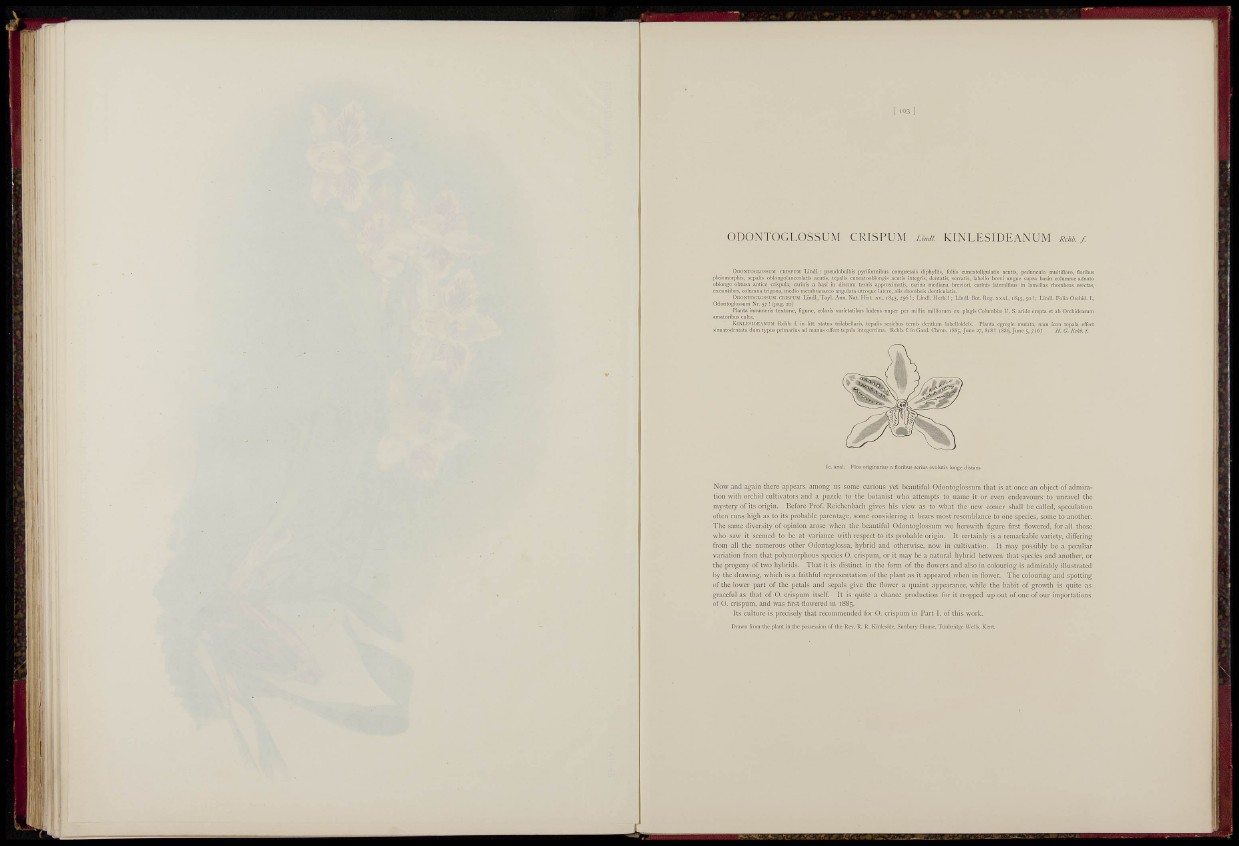
' :j i L L ' : _ i mm
O D O N T O G L O S S U M CRISPUM LML KINLESIDEANUM AV«. /
OlKiNTOOt.OSSUM CRISl'UM Lindl.: pscudobulbis pyriformibus compressis diphyllis, foliis cuncaloliEulat
plcioranrphii, sepal Is oblungoiinccolatis aoitis. tcpalis cuncnlooblonais acuì is intcgris, dcnratis, scrratis, label lo bi
oblonge nbluM tinticc crispula, cariiiis .1 bas! in discum Icrnis appi-o*iinalis, carina inodiaiw brcviori, carinis '
cxounlibus, cnlurana IriROiia, medio membranaceo angulala utrocjue latere, alls rlionibeis dcnliculalis.
OliONTOüIXXSSUSl CHISI'UM Lindl., Tayl. Ann. NaL Hist, xv., 1S45, 5;6I ; Lindl. Herb. I ; Lindl. Rot. Rej;. xxxi., :S4S, 50I ; Lindl.
Odontogiossum Nr. 57 Ì (jMig. 20)
• miimeris Icxliirru, (igunc, colons variclalibiis ludcns nupcr per millia millionim cx plagis Columbia: U. S. nridc crepta et
a fioribus so
Now and again tliere appears among us some curious yet beautiful Odontoglossi
n that is at once an object of aclmiraor
tion with orchid cultivators and a pu/zle to the botanist who attempts to name ;
even endeavours to unravel tlie
my.stery of its origin. Before Prof. Reichenbach gives his view as to what the n
r shall be callcd, speculation
often runs high as to its probable parentage, some considering it bears most resemblance to 0
e species, some to another.
The same diversity of opinion arose when the beautiful Odontoglossum wc herewith figure first flowered, for all those
who saw it seemed to be at variance with rcspcct to its probable origin. It certainly is a remarkable variety, differing
from all the numerous other Odontoglossa, hybrid and otherwise, now in cultivation. It may possibly be a peculiar
variation from that polymorphous species O. crispum, or it may be a natiu'al hybrid between that species and another, or
the progeny of two hybrids. That it is distinct in the form of the flowers and also in colouring is admirably illustrated
by the drawing, which is a faithful representation of the plant as it appeared when in flower. The colouring and spotting
of the lower part of the petals and sepals give the flower a quaint appearance, while the habit of growth is quite as
graceful as that of O. crispum itself. It is quite a chance pro<luction for it cropped up out of one of our importations
of O. crispum, and was first flowered in 1885.
Its culture is precisely that recommended for O. crispum in Part I. of this work.
Drawn fi-om the pl.int in tl of til nbridgi.' Wells, K
A